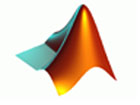 |
Psychology 448A/538AAdvanced Programming for the Behavioral Sciences |
 |
Course Announcements:5/4: Due to a glitch (mistake) that closed the catalyst submission time early for hw4, I'll let you submit 'getThreshold.m' any time before midnight tonight (Monday night). 5/3: NO CLASS NEXT WEEK (5/11 and 5/13). Please use this time to think about your course project.
|
||||||||||||||
|---|---|---|---|---|---|---|---|---|---|---|---|---|---|---|
Course ObjectivesThe objectives of this course are to learn how to use the programming language Matlab to develop, run and analyze data for experiments in the behavioral sciences. Through course lectures, homework assignments and a course project, students will become familiar with some of the more advanced tools that are available to generate stimuli, plot graphs, analyze data, and run simulations.Students are expected to have a background in computer programming, preferably Matlab, and should have access to a computer running the Matlab software. No special toolboxes are required except for the Psychophysics Toolbox, which is free 3rd party software. Instructions for downloading and installing the Psychophysics Toolbox can be obtained here. This is the second quarter of a two-quarter sequence. The website from the first course,' MATLAB for the Behavioral Sciences: How to program your own experiment' can be obtained here. It is suggested that you review this course if you're rusty with Matlab. GradingStudents will be evaluated through their performance on weekly homework assignments (65%) and through a course project due at the end of the academic quarter (35%). Course OutlineSection 1 of this course will work through an experiment that measures |